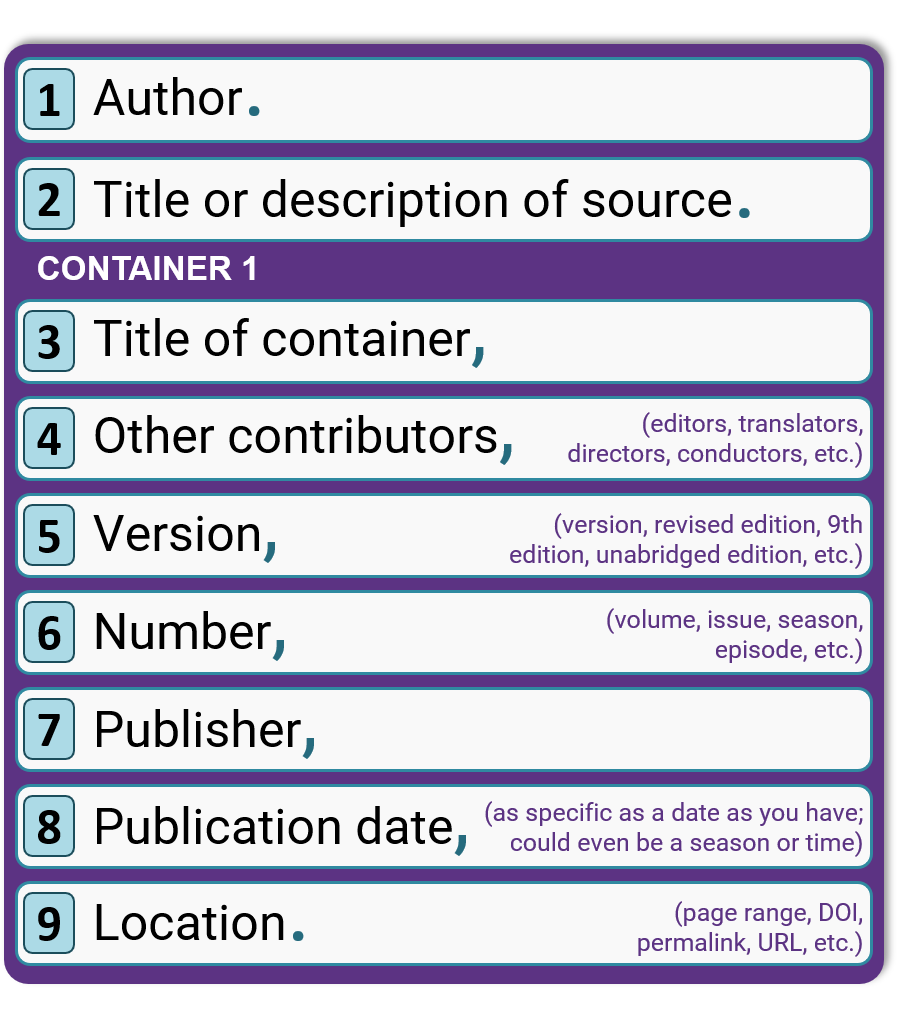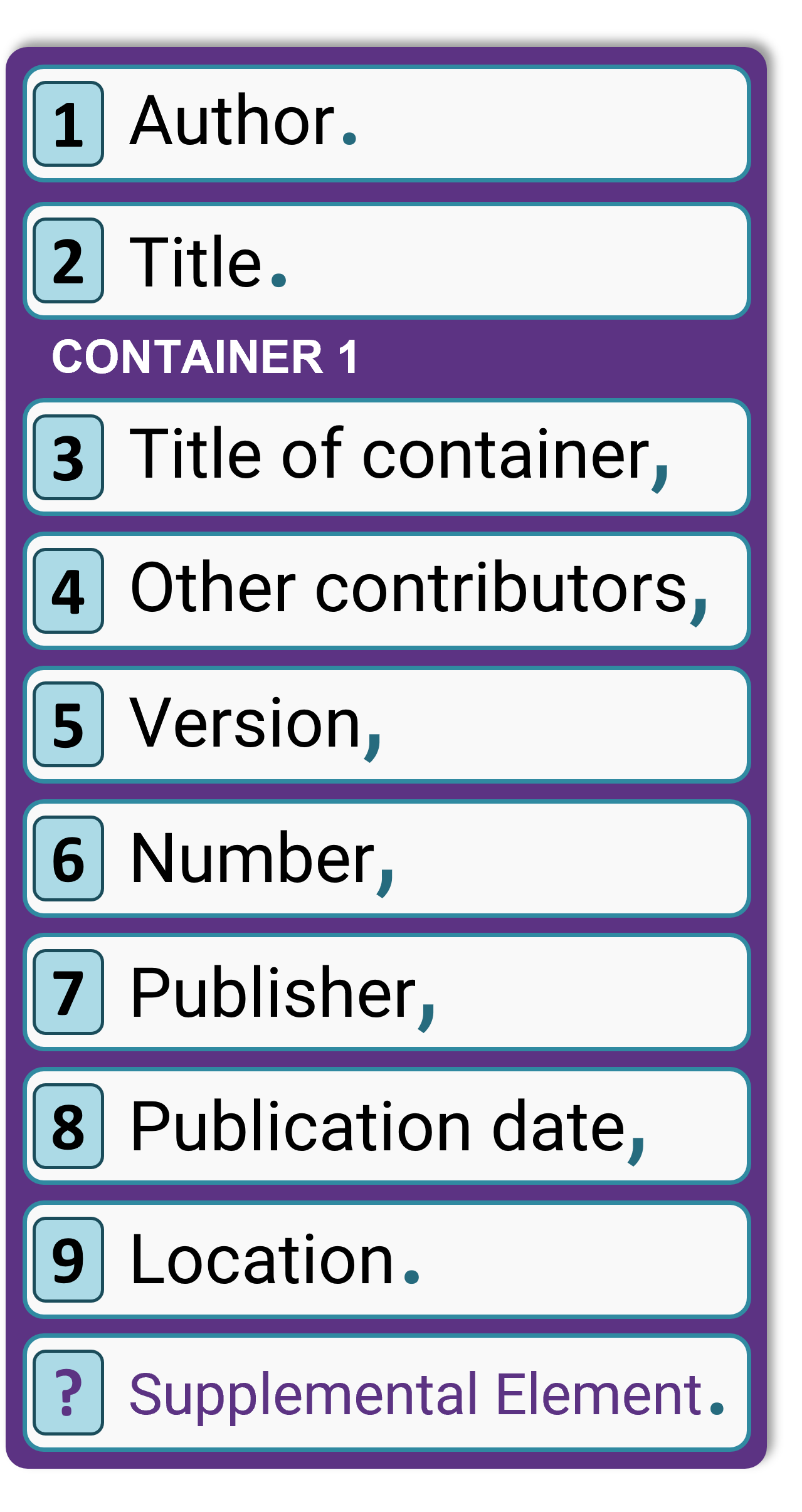 When creating an MLA Works Cited page, remember that not every citation will use all the elements in a container. Only use the elements that are necessary to identify your source. We detail exactly what those elements are for a variety of print books in the examples below.
When creating an MLA Works Cited page, remember that not every citation will use all the elements in a container. Only use the elements that are necessary to identify your source. We detail exactly what those elements are for a variety of print books in the examples below.
Two Authors
More Than Two Authors
For more than two authors: list only the first author followed by the phrase “et al.” (Latin abbreviation for “and others”; no period after “et”) in place of the other authors’ names.
Any articles or legal reference to the organization should be omitted from the name.
If your writing is focused on the actual translation work itself, it would be acceptable to cite this same citation as follows.
In this example, the first date is the original date of publication, and the second is the publication date of the source consulted.
 MLA requires different formatting depending on how many volumes of a multi-volume work you are referencing for your citation.
MLA requires different formatting depending on how many volumes of a multi-volume work you are referencing for your citation.
Citing Only One Volume
If you are citing just one volume of a multi-volume work, list just that number after “Vol.” as supplemental information at the end of your citation.
Citing More Than One Volume of a Multivolume Work
When citing some or all of a multivolume set, add up the total number of volumes and include that total with “vols” as a supplemental item at the end of your citation.
If the author of the part cited is different from the author of the book, then write the full name of the complete work’s author after the word “by.”
If the section has a detailed name, use it in quotes. In this situation, you normally do not need to use the generic name.
